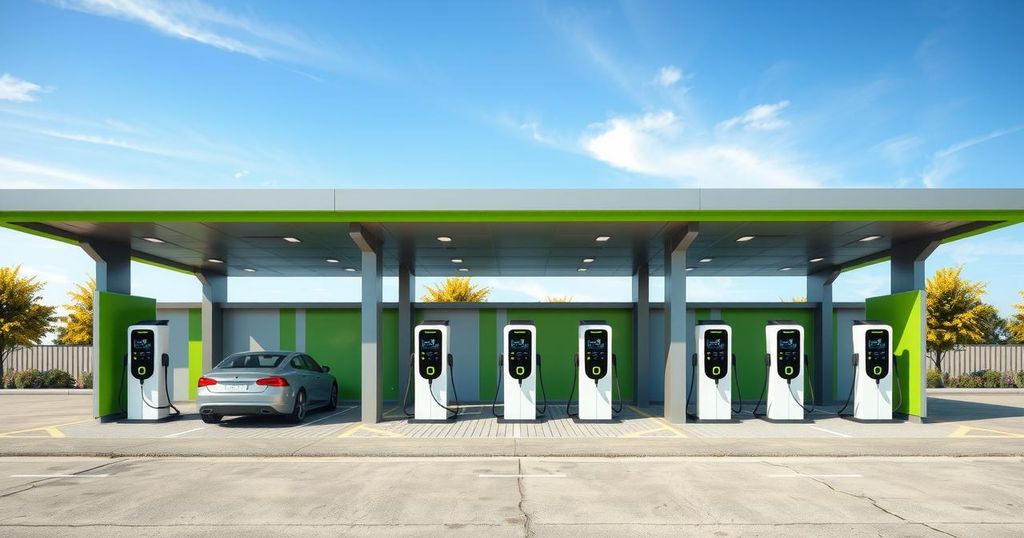Nigeria Launches Africa’s Largest Electric Vehicle Charging Station
Nigeria has inaugurated Africa’s largest electric vehicle charging station in Abuja, highlighting its commitment to local EV production and reducing reliance on fossil fuels. This initiative is part of a broader strategy under the National Automotive Industry Development Plan, which aims to enhance local production and create jobs in the automotive sector.
Nigeria has officially inaugurated Africa’s largest locally assembled electric vehicle (EV) charging station in the capital city of Abuja. This initiative seeks to promote local production of electric vehicles and decrease reliance on fossil fuels, as reported by DNE Africa, a partner of TV BRICS. The opening ceremony also showcased electric buses and taxis, marking significant advancements in the country’s efforts to modernize its automotive sector and reduce emissions.
Minister of State for Industry, Trade and Investment, John Uwan-Enoh, emphasized Nigeria’s commitment to producing electric vehicles, aiming for 30% of all vehicles manufactured in the country to be electric. This initiative is part of the National Automotive Industry Development Plan, which aims to boost car production to 1 million units annually, increase local production to 40%, and create 200,000 jobs in the sector.
To facilitate the shift towards electric vehicles, Nigerian authorities have acknowledged the necessity for further investment in renewable energy sources as well as the expansion of the charging station infrastructure throughout the country. This reflects a broader strategy to enhance sustainability in transportation within Nigeria.
In conclusion, Nigeria’s inauguration of Africa’s largest electric vehicle charging station signals a strong commitment to advancing local electric vehicle production and reducing fossil fuel dependency. With support from the National Automotive Industry Development Plan, the country aims to achieve significant milestones in automotive manufacturing and job creation while investing in necessary renewable energy infrastructure to support this transition.
Original Source: tvbrics.com




Post Comment